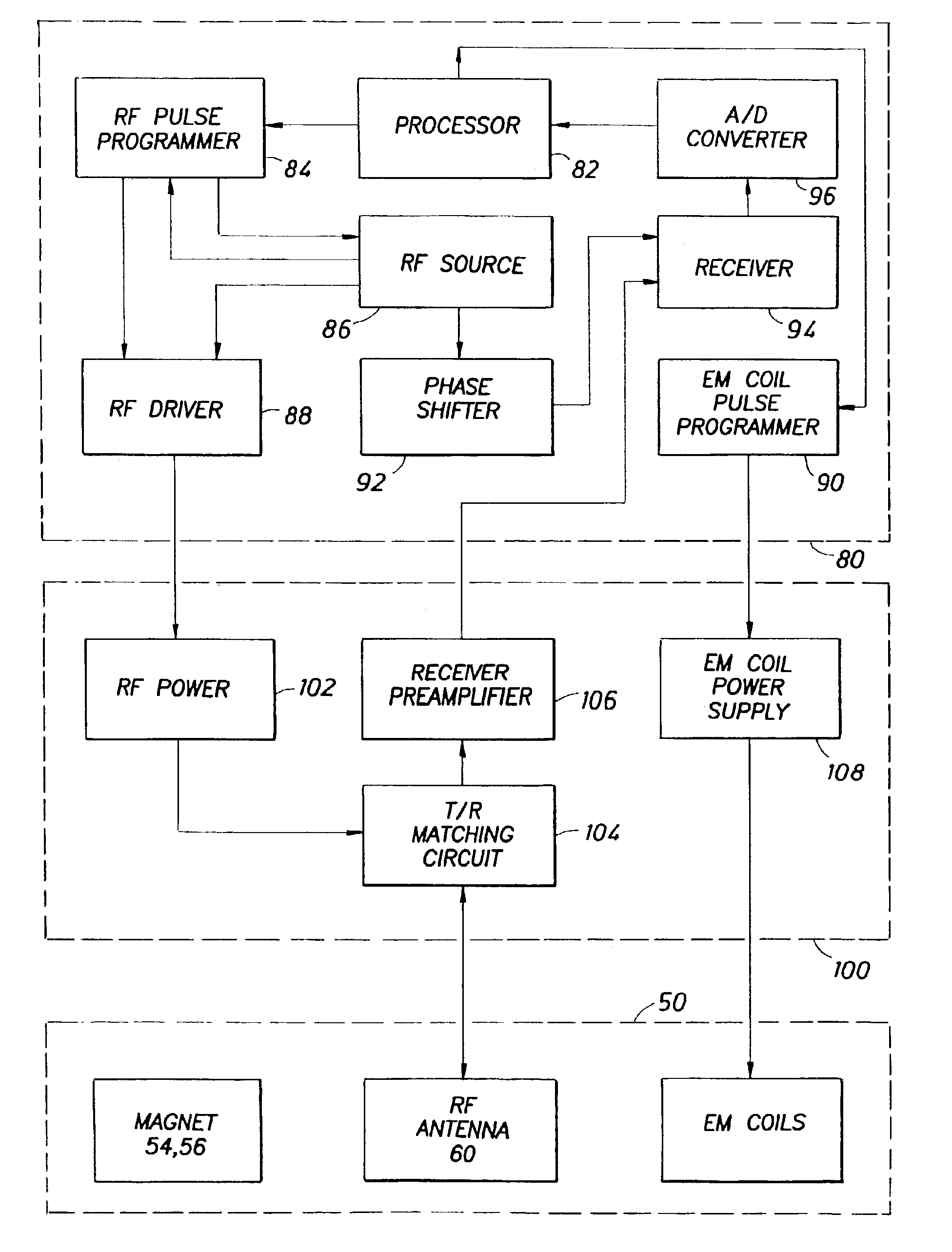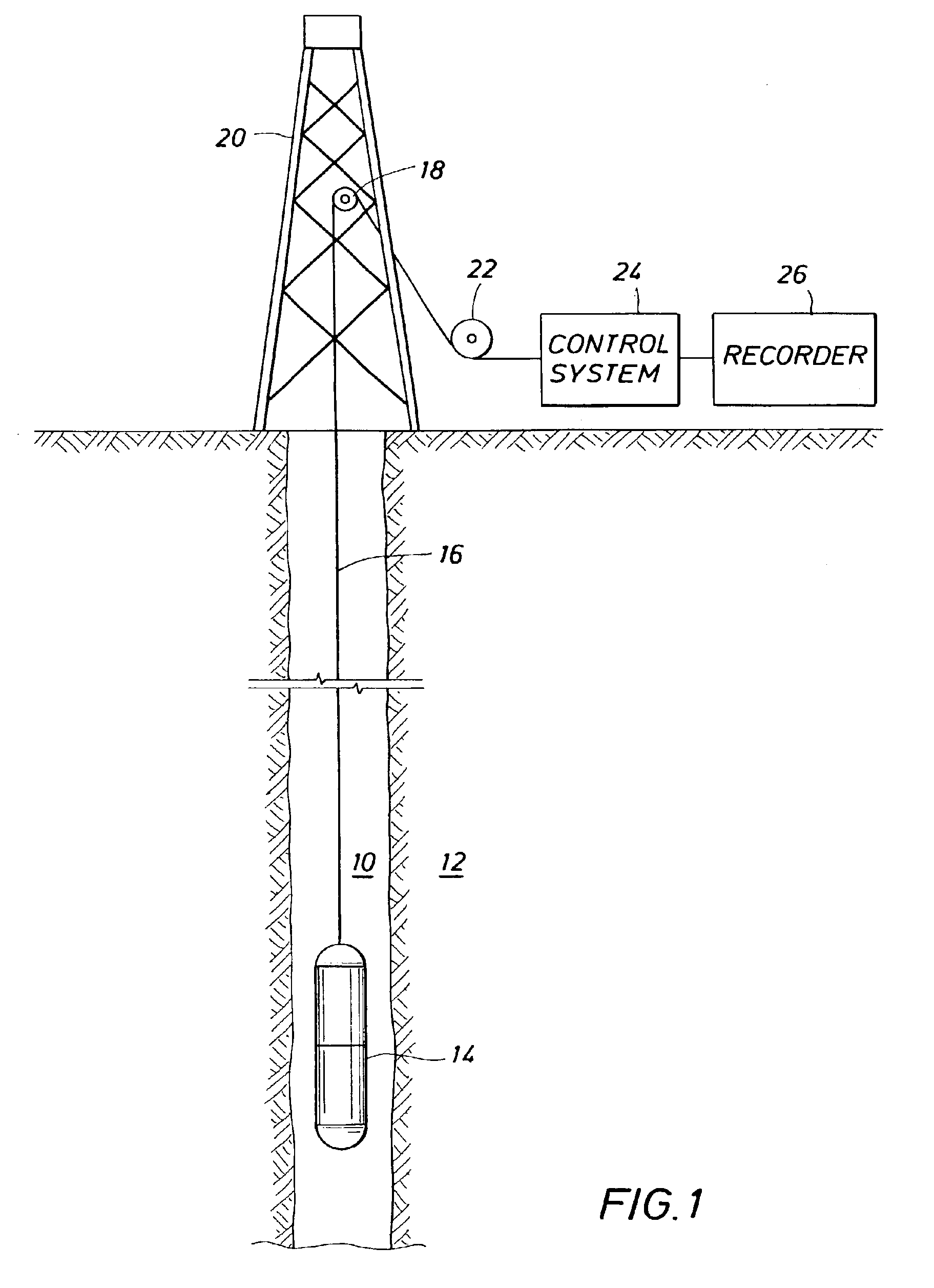Method and apparatus for subterranean formation flow imaging
a technology of flow imaging and subterranean formations, applied in the direction of reradiation, measurement using nmr, instruments, etc., can solve the problems of difficult recognition of pay zones within earth formations, difficult to produce oil or gas, and the effect of borehole rugosity and mudcake on resistivity measuremen
- Summary
- Abstract
- Description
- Claims
- Application Information
AI Technical Summary
Benefits of technology
Problems solved by technology
Method used
Image
Examples
Embodiment Construction
The present invention is intended to be used as an NMR imaging device within a well borehole. Use of the present invention within the well borehole is intended to provide certain formation characteristics, including, porosity, permeability, fluid characterization, flow velocity and 3-D imaging of the formation of interest. With reference to FIG. 1, a well logging system is generally depicted. A well borehole 10 is seen as penetrating earth formation 12, having been drilled using known methods. A well logging tool 14 is seen as being lowered into the well borehole and on an armored, multiconductor cable 16. The tool 14 includes the sensors required for the measurement(s) to be made, power conditioning circuitry, tool control processors, and telemetry circuitry to transmit the information back up the cable 16. The cable 16 is lowered over shiv wheel 18, which is in turn supported by rig 20. The cable 16 is played out from a winch 22, controlled by an operator within a well logging tru...
PUM
 Login to View More
Login to View More Abstract
Description
Claims
Application Information
 Login to View More
Login to View More - R&D
- Intellectual Property
- Life Sciences
- Materials
- Tech Scout
- Unparalleled Data Quality
- Higher Quality Content
- 60% Fewer Hallucinations
Browse by: Latest US Patents, China's latest patents, Technical Efficacy Thesaurus, Application Domain, Technology Topic, Popular Technical Reports.
© 2025 PatSnap. All rights reserved.Legal|Privacy policy|Modern Slavery Act Transparency Statement|Sitemap|About US| Contact US: help@patsnap.com



